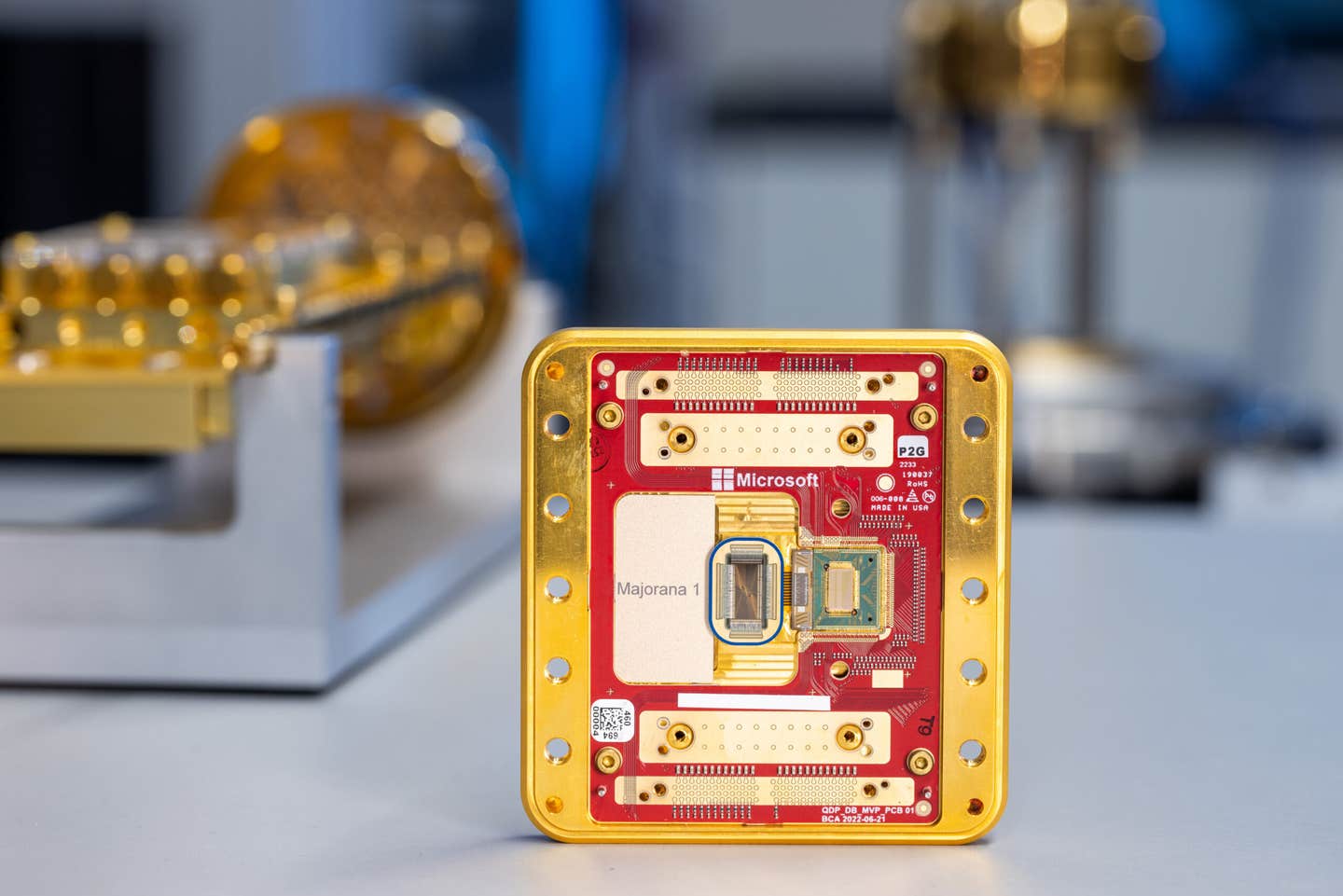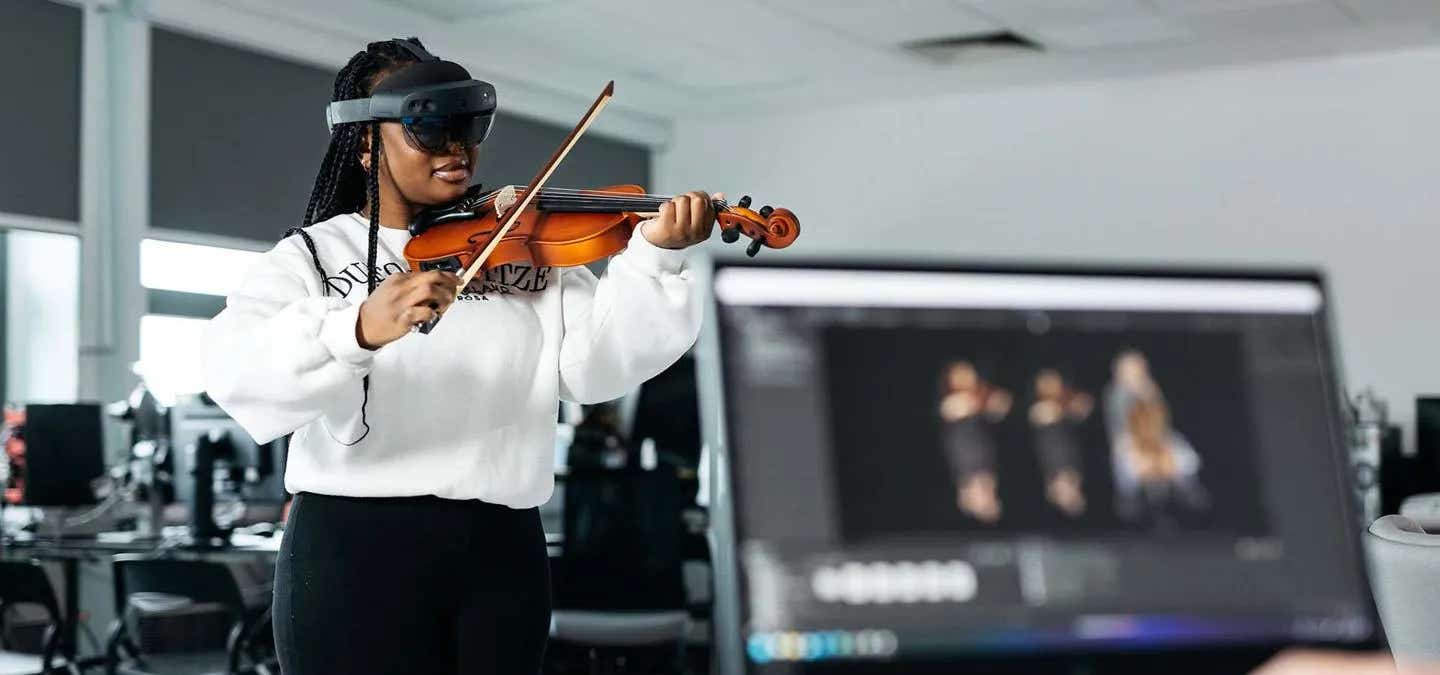Microsoft’s quantum breakthrough signals the dawn of ultra-fast computing
Microsoft unveils topological qubits, a major leap in quantum computing that could potentially unlock a million-qubit quantum future.

Microsoft claims a quantum computing breakthrough with topological qubits. (CREDIT: John Brecher for Microsoft)
Microsoft has announced a significant breakthrough in quantum computing: the creation of the first "topological qubits." Unlike conventional quantum bits, these qubits store information using an exotic state of matter. If the technology proves viable, it could redefine the race toward practical quantum computing, allowing scientists to solve problems that are impossible for classical computers.
The company has published its findings in Nature alongside a roadmap detailing its vision for scaling up quantum processors. At the core of this initiative is the Majorana 1 processor, designed to fit up to a million qubits—potentially enough to revolutionize fields like cryptography, drug discovery, and materials science.
This development positions Microsoft as a strong competitor against companies like IBM and Google, which have been leading the charge in quantum computing.
However, the peer-reviewed research confirms only part of the claims, and significant hurdles remain before a fully operational quantum system emerges. While independent validation is still needed, experts acknowledge that Microsoft’s new approach could be game-changing.
The Challenge of Building Qubits
Quantum computers operate on qubits, which differ fundamentally from classical bits. While traditional computers process information as either a 0 or a 1, qubits can exist in a state called superposition, where they represent both values simultaneously.
This ability allows quantum computers to perform complex calculations exponentially faster than classical machines, particularly in fields like cryptography and molecular modeling.
However, maintaining quantum states is extremely difficult. Qubits are fragile and prone to errors due to interactions with their surroundings. Researchers have experimented with various methods to stabilize them, including trapping atoms in electromagnetic fields and using superconducting circuits. Despite progress, current quantum systems struggle with error rates that limit their practical use.
Related Stories
Microsoft has taken a different approach, betting on topological qubits to overcome these challenges. Instead of fighting against errors with extensive error-correction mechanisms, these qubits are designed to be inherently more stable.
The Power of Majorana Particles
At the heart of Microsoft’s quantum breakthrough lies a strange and elusive phenomenon: Majorana particles. First theorized in 1937 by Italian physicist Ettore Majorana, these particles behave as their own antiparticles. They do not exist naturally but can be induced in special materials known as topological superconductors—which require extreme cooling and precise fabrication techniques.
Microsoft's quantum team has engineered a system where tiny nanowires host pairs of Majorana particles at each end. These particles act as qubits by encoding quantum information in their unique properties. Because the information is spread across two locations, the qubits are highly resistant to disturbances that usually cause errors in quantum computing.
This approach relies on a technique called braiding, where the positions of Majorana particles are swapped in a controlled manner to perform computations. Unlike conventional qubits that require heavy error correction, these qubits should theoretically maintain their integrity with minimal interference.
Microsoft’s decision to pursue Majorana-based quantum computing represents a long-term bet. While companies like Google and IBM have focused on error correction to stabilize conventional qubits, Microsoft aims to build a fundamentally more robust qubit from the ground up.
Scaling Up: Challenges and Opportunities
Despite its promise, Microsoft's quantum architecture still faces obstacles. The most notable limitation is an operation known as the T-gate, which introduces small errors even in Majorana-based systems. While correcting these errors is simpler than in other quantum architectures, it still requires additional engineering breakthroughs.
Microsoft is now working to scale its technology. The company has successfully placed eight topological qubits on a chip, named Majorana 1, but ultimately aims to reach one million qubits. Achieving this scale could unlock groundbreaking applications, such as simulating complex chemical reactions, optimizing AI algorithms, and advancing sustainable materials.
Microsoft CEO Satya Nadella expressed optimism about the timeline, writing, “We believe this breakthrough will allow us to create a truly meaningful quantum computer not in decades, as some have predicted, but in years.”
Industry analysts see Microsoft’s strategy as a potential game-changer. Chirag Dekate, a Gartner analyst, remarked, “I think it fundamentally changes the competitive landscape.” While Microsoft’s approach still requires proof at scale, he noted that its strategy could give the company a major advantage over rivals.
According to Chetan Nayak, Microsoft’s corporate vice president of quantum hardware, the company has effectively developed the "transistor for the quantum age." He likened this breakthrough to the transition from vacuum tubes to transistors in classical computing, a shift that ultimately led to the microchip revolution.
A New Era in Quantum Research
Microsoft’s advances are not occurring in isolation. The company has been selected by DARPA, the U.S. Defense Advanced Research Projects Agency, to build a prototype fault-tolerant quantum computer. This system could serve as the foundation for future quantum technologies with military and industrial applications.
At the same time, Google and other tech giants continue their pursuit of quantum supremacy using alternative architectures. Google recently announced its Willow chip, which uses large numbers of conventional qubits to reduce errors. While this method provides incremental improvements, Microsoft’s topological approach seeks to bypass error challenges altogether.
Key to Microsoft’s breakthrough is the development of topoconductors, a new class of materials created by combining aluminum with indium arsenide—a compound commonly used in infrared detectors. These materials enable topological superconductivity, a state of matter distinct from solids, liquids, and gases. By leveraging these materials, Microsoft has engineered a system where electrons form quasiparticles that mimic Majorana behavior.
A critical component of the technology is a quantum dot, a tiny capacitor that helps measure the quantum state of the system. This innovation allows Microsoft to read quantum information more efficiently, improving reliability and scalability.
Next Steps
Despite the excitement, external experts have called for more empirical evidence to confirm Microsoft’s claims. Some remain skeptical about whether the company has truly demonstrated a working topological qubit. Nevertheless, if validated, this breakthrough could accelerate the timeline for practical quantum computing by years.
Microsoft envisions a future where quantum computers transform industries. Potential applications include self-healing materials for infrastructure, new agricultural methods for sustainable farming, and safer drug development processes.
As Nayak put it, “A million-qubit quantum computer isn’t just a milestone—it’s a gateway to solving some of the world’s most difficult problems.”
With continued research, topological quantum computing could usher in a new technological era. The coming years will determine whether Microsoft’s bet on Majorana particles pays off—but if it does, the quantum age may arrive sooner than expected.
Note: Materials provided above by The Brighter Side of News. Content may be edited for style and length.
Like these kind of feel good stories? Get The Brighter Side of News' newsletter.
Joseph Shavit
Head Science News Writer | Communicating Innovation & Discovery
Based in Los Angeles, Joseph Shavit is an accomplished science journalist, head science news writer and co-founder at The Brighter Side of News, where he translates cutting-edge discoveries into compelling stories for a broad audience. With a strong background spanning science, business, product management, media leadership, and entrepreneurship, Joseph brings a unique perspective to science communication. His expertise allows him to uncover the intersection of technological advancements and market potential, shedding light on how groundbreaking research evolves into transformative products and industries.



